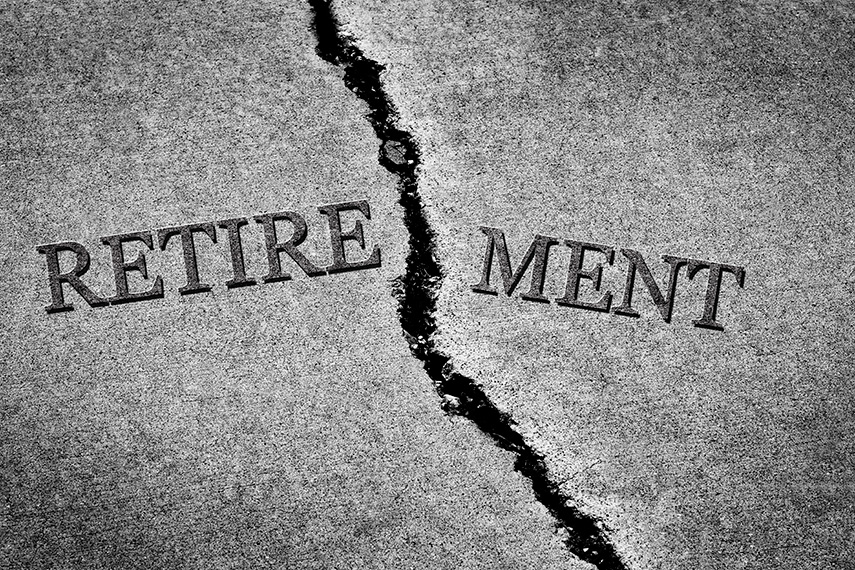Starting a Gold IRA: What You Need to Know
People choose to start a gold IRA for a number of different reasons Some are looking to help safeguard themselves against stock market instability Others are trying to help safeguard their wealth...
Retirement

The retirement savings gap is the difference between what people have saved for retirement and how much they actually need to save in order to retire comfortably. Many people are aware that Americans are highly indebted and have a low savings rate, but just how much that contributes to the retirement savings gap and how large that gap is is probably underappreciated.
The United States has the worst retirement savings gap of any large developed nation. In 2015 the gap stood at $28 trillion, a sum nearly 1.5 times the entire US gross domestic product. But by 2050 that number is expected to explode to $137 trillion, an astronomical figure. The expected growth rate of the retirement savings gap is 5% per year, higher that the UK, Canada, and Japan, and only exceeded by China and India.
While those numbers sound really bad, the reality of the retirement situation will likely feel far worse to those who reach retirement age and find themselves unable financially to afford retirement. There are a number of different reasons for the retirement gap in the US, each with a potential solution that may or may not have been explored yet. How do your retirement savings stack up to what you need in order to retire comfortably?
Around the world there are three primary factors affecting the retirement savings gap: longer lifespans, insufficient retirement savings, and jobs that don’t offer retirement security. Some of those factors can be helped and others can’t, so let’s break things down a little further.
With longer lifespans comes a greater need for money in retirement. And since healthcare costs are rising significantly too, Americans will have to shell out more and more money each year for healthcare expenses. Many people plan for retirement by assuming that they’ll spend the same amount of money each year. They don’t account for extra healthcare expenses, health emergencies, etc., and so they end up falling short once they reach retirement. By that point it’s too late to try to build up more savings.
This is a tough one because so many people have been conditioned over the years to think that someone else will help pay for their retirement. In many cases it may be through a pension plan. But most pension plans in the United States are dramatically underfunded. In the case of private pension plans, many employers have shunted their responsibilities off to the Pension Benefit Guarantee Corporation (PBGC). Workers who toiled for decades expecting their employer to take care of them in retirement all of a sudden find themselves with drastically reduced incomes in retirement.
Government pension plans aren’t any better, with rosy assumptions about tax revenues and asset growth underpinning those pension plans not having come to fruition. Thousands, if not millions, of public sector employees around the country will probably also find out the hard way that the money they were promised in retirement will not be forthcoming.
Many also assumed that Social Security would protect them in retirement, but what we’re seeing is that Social Security is now underfunded. The situation is so bad that within 15 years the Social Security trust fund will be completely exhausted. From that point forward Social Security will only pay about 80% of expected benefits. That’s another tough blow to those expecting Social Security payments in retirement.
Then there are many Americans who just don’t start thinking about retirement until it’s too late. The time to start thinking about and saving for retirement is when you enter the workforce. Waiting until your kids are grown and out of the house is a recipe for ending up on the cusp of retirement with not much money to fund that retirement.
While most jobs today don’t offer pensions, many of them do offer 401(k) retirement plans, and many even offer matching contributions to those 401(k) plans. Even for those employees who don’t have a 401(k) option, they can still open an IRA account that allows them to save up to $6,000 a year for retirement. Or they can open a brokerage account at many financial advisory firms.
Americans will increasingly have to take responsibility for their own retirement. They won’t be able to depend on employers or the government chipping in. If you want to retire in comfort then it’s incumbent upon you to take the right steps to start saving and investing for retirement.
That means first and foremost figuring out your financial situation. Do you have a retirement savings gap? If so, how long will it take you to fill it? You’ll need to figure out how much money you’ll spend in retirement, how much you’ll need when you retire, and then figure out how much you’ll need to save each year to achieve that goal. You’ll have to take advantage of every opportunity you can to save as much money as possible, whether it’s through workplace 401(k) plans, IRA accounts, or other retirement savings vehicles.
Finally, you’ll want to protect your assets once you’ve accumulated them by investing a portion of your portfolio in precious metals like gold and silver. That ensures that once you’ve made your gains, you’ll keep them through the turmoil and tribulations that assail markets.
Being responsible for your own retirement can be a daunting task, but the reward is well worth the effort. Better to toil and sweat and emerge successfully retired in sound financial shape rather than trust in others and end up entering retirement disappointed, stressed out, and unsure of whether or not you’ll be able to survive.

